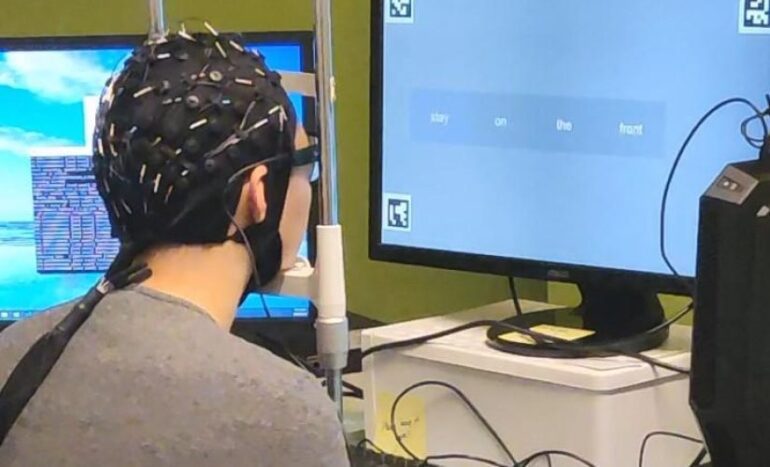TL;DR:
- Australian researchers at the University of Technology Sydney (UTS) have introduced DeWave, an innovative AI system capable of translating silent thoughts into text through EEG technology.
- DeWave’s non-invasive approach, using an EEG cap, achieved an accuracy rate of over 40% in decoding thoughts, eliminating the need for implants or surgery.
- The system identifies verbs with ease but occasionally translates concrete nouns as synonymous word pairs due to similar EEG patterns.
- DeWave’s potential applications include aiding paralysis patients in fluid communication and control over assistive devices.
- Researchers aim to improve DeWave’s accuracy to around 90% to match traditional speech recognition technology.
- The integration of DeWave’s mind-reading capabilities with advanced language models opens up new horizons in AI and neuroscience.
Main AI News:
In a striking leap towards the future, Australian researchers at the University of Technology Sydney (UTS) have unveiled DeWave, a groundbreaking artificial intelligence (AI) system. DeWave is poised to redefine communication as we know it by translating silent thoughts into text through the power of brain waves. This innovation comes without the need for invasive implants or surgery, setting it apart from Elon Musk’s ambitious Neuralink project.
DeWave utilizes an electroencephalogram (EEG) cap to record neural activity while subjects read text and have their eye movements monitored. Through a meticulous process of matching EEG patterns with eye fixations, which indicate recognized words, DeWave can decode thoughts with an impressive accuracy rate of over 40%, as demonstrated in early experiments.
Lead researcher Chin-Teng Lin, from UTS, has hailed DeWave as an “innovative approach to neural decoding,” marking a significant breakthrough in the field of neuroscience and AI. Lin further emphasized the pioneering nature of this research, as it directly translates raw EEG waves into language. Moreover, DeWave’s integration with large language models is paving the way for unprecedented advancements in both neuroscience and AI.
While DeWave excels at identifying verbs from neural signals, it occasionally translates concrete nouns as synonymous word pairs, highlighting the inherent challenges in deciphering semantically related concepts that share similar EEG patterns. Despite these challenges, the non-invasive nature of DeWave’s EEG cap holds immense promise.
Looking ahead, DeWave’s AI technology could potentially offer a lifeline to paralysis patients, enabling them to regain fluid communication or even gain direct control over assistive devices. However, the quest for perfection continues, as researchers aim to enhance the system’s accuracy to approximately 90%, on par with traditional speech recognition technologies.
Conclusion:
DeWave’s emergence in the market signifies a significant leap in the field of AI-driven communication and neuroscience. Its potential to empower paralysis patients and streamline human-machine interactions positions it as a game-changer in both healthcare and technology sectors, promising exciting opportunities for innovation and growth.

